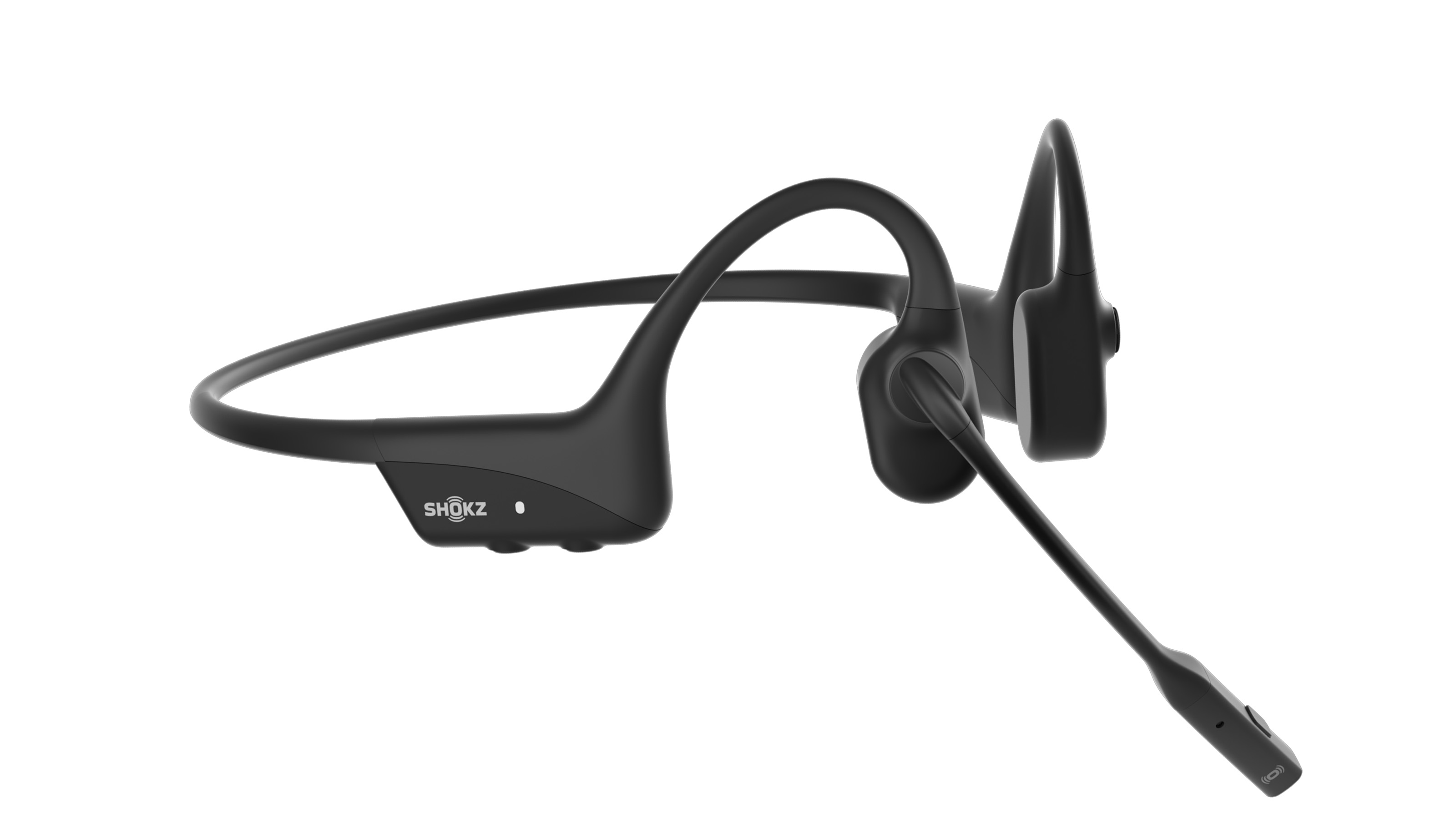
Last year, Shokz invited me to review its OpenComm UC bone conduction stereo Bluetooth headset. I thought it was a truly excellent alternative to traditional headphones and earbuds. I used it for professional phone calls and videoconferences, and even wore them during outdoor exercise and household chores. When Shokz provided the new OpenComm2 UC model, I was curious to see if the new headset could measure up—or even exceed—the original.
[Review: Audio-Technica Targets Streaming Production with StreamSet]
Remember, bone conduction headsets use vibration through the bones in your skull to transmit sound. As a result, the OpenComm2 UC doesn’t need to put anything in or on your ears to deliver sound vibrations to your inner ear. This makes the headset a smart choice if you want to remain aware of your surroundings, not so good if you work in a noisy, distraction-filled office.
Also, “vibration” is an important word here, as the headset can create a slight vibrating sensation above your cheeks, depending on the content and volume of your audio source. It doesn’t bother me at all, but some people may find it distracting or uncomfortable.

Aesthetically, the OpenComm2 UC has two major changes. Most noticeable is that the thin microphone boom arm has been moved from the left side of the headset to the right. With this change, Shokz has added a dedicated mute button on top of the microphone, a feature that was sorely missed in the first iteration. (The original OpenComm UC required a clunky, two-button press behind your right ear.)
Turn on the headset and you’ll hear a welcome as well as a connection notice. Pairing the headset with my PC via the USB-A adapter was automatic; it took less time than it took for me to type this sentence. Bluetooth pairing with my iPhone was also uncomplicated.
[Review: Biamp Helps You Read the Room]
Multipoint pairing on the OpenComm2 UC has been streamlined, so pairing one headset to two devices was not a problem, but switching between the two remains an issue. There is a (very) small multifunction button on the adapter. If you can press it, you should be able to switch between devices. I got frustrated, though, because I wound up in pairing mode more times than not. The easiest solution remains unplugging the adapter to switch between the two—it’s not elegant, but it works.

The headset delivers excellent audio, and my compliments to Shokz for significantly improving the EQ choices. The “standard” mode delivers a balanced sound more suited for music, while the “vocal booster” mode ups the treble for podcasts and audiobooks without completely crushing the rest of the audio. You can definitely hear the difference when listening to tracks like “i like the way” from lovelytheband, so this setting comes down to personal preference.
The carrying case has two improvements. First, it’s a bit thinner than the previous model, which is always appreciated for travel, but still has a protected, form-fitting home for the headset. Second, the dedicated USB adapter slot has been replaced by a more secure small pocket. There’s still a mesh pocket for storing the charging cable.
Speaking of which, I’m rarely a fan of proprietary charging cables. That said, I love that this one is magnetic, so there’s no awkward battle to attach a USB-C cable on such a small, lightweight, and flexible device. On the other hand, lose that cable and you’ll be praying for overnight delivery.
Like the previous model, the multifunction button in front of your left ear, combined with the volume buttons behind your right ear, allow you plenty of functionality. The headset features a noise-cancelling mic, and I was told I sounded great by folks on the other end of phone and videoconferencing conversations. The OpenComm2 UC is also certified for Zoom, another improvement from the original.
Priced at $199 on the Shokz website, is it the worth the upgrade? For the uninitiated, I’m quick to recommend a test drive, provided your environment is conducive to an open-ear headset solution. The OpenComm2 UC offers excellent performance and is easy to wear for long periods of time. For owners of the original OpenComm UC, a dedicated mute button, improved pairing, and Zoom certification will make an upgrade very tempting.







